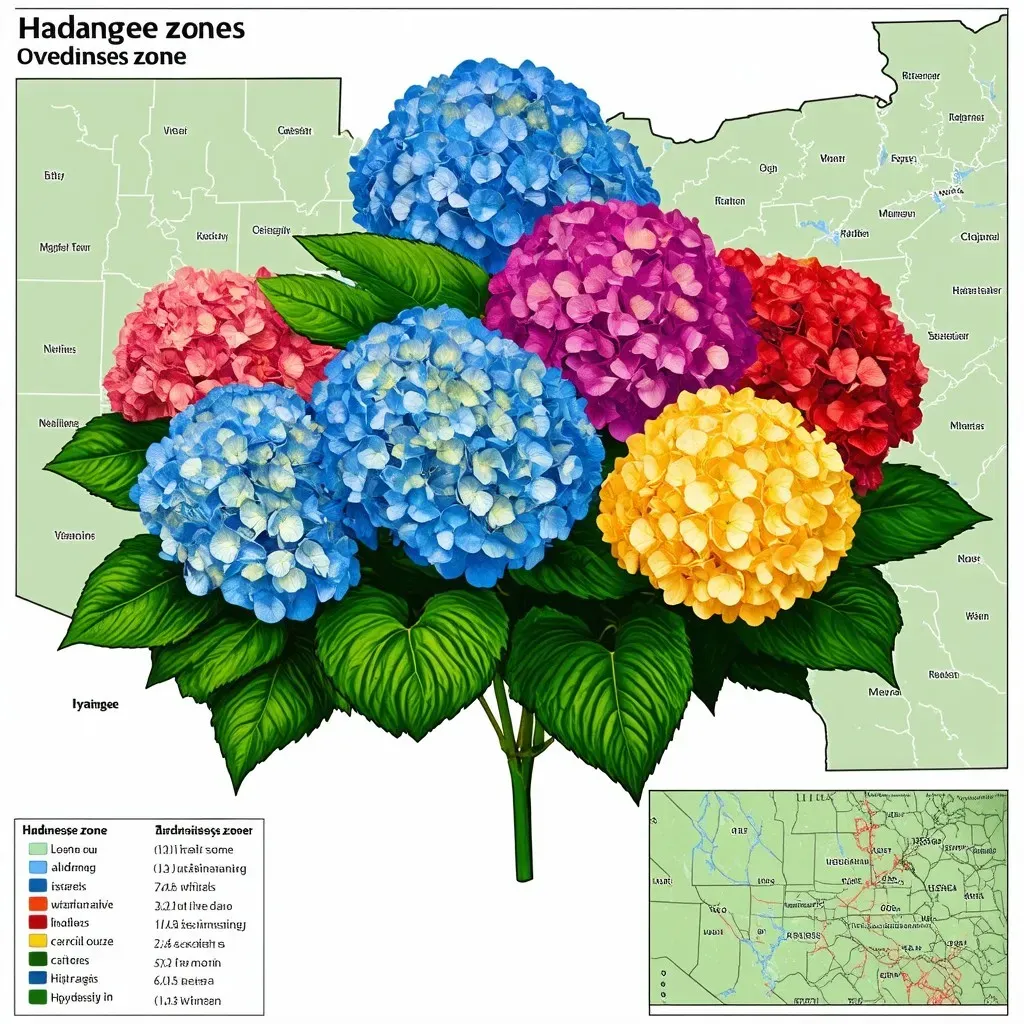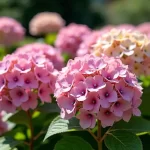The hydrangea hardiness zone is a vital consideration for gardeners aiming to cultivate these vibrant blooms successfully. Hydrangeas thrive at various hardiness levels, allowing enthusiasts across different climates to enjoy their beauty.
Understanding Hydrangea Hardiness Zones
Hydrangeas fall within USDA hardiness zones 3 to 9, and knowing your specific zone can guide you in selecting the best types for your desired landscape. The USDA hardiness zones consider the average annual minimum temperatures to provide a framework for gardeners. Each zone represents a temperature range that can impact plant survival and growth.
| USDA Hardiness Zone | Temperature Range (°F) | Temperature Range (°C) |
|---|---|---|
| 3 | -40 to -30 | -40 to -34 |
| 4 | -30 to -20 | -34 to -29 |
| 5 | -20 to -10 | -29 to -23 |
| 6 | -10 to 0 | -23 to -18 |
| 7 | 0 to 10 | -18 to -12 |
| 8 | 10 to 20 | -12 to -7 |
| 9 | 20 to 30 | -7 to -1 |
Choosing the Right Hydrangea Varieties for Your Zone
Different hydrangea species and cultivars offer varying degrees of hardiness. Understanding which species thrive in your specific zone is crucial for a flourishing garden. Here’s a list of popular hydrangea varieties categorized by hardiness zones:
| Variety | Common Name | Hardiness Zones | Notes |
|---|---|---|---|
| hydrangea macrophylla | Bigleaf Hydrangea | 5-9 | Prefers moderate climates; susceptible to cold |
| Hydrangea paniculata | Panicle Hydrangea | 3-8 | Very hardy; blooms on new wood |
| Hydrangea quercifolia | Oakleaf Hydrangea | 5-9 | Notable for its oak-shaped leaves |
| Hydrangea anomala | Climbing Hydrangea | 4-8 | Great for vertical gardening, requires support |
| Hydrangea arborescens | Smooth Hydrangea | 3-9 | Known for its large, white blooms |
Hydrangea Care According to Hardiness Zones
Different zones necessitate unique care practices, tailoring your approach to the climate conditions experienced in your location. Here are some tailored Hydrangea Care tips based on hardiness zones:
Zone 3: Cold Resilience
- Best Varieties: ‘Annabelle’ and ‘Incrediball’
- Care Tips: Apply winter mulch and consider planting late to avoid spring frosts. Provide extra water during dry spells in summer.
Zone 4: The Balanced Environment
- Best Varieties: Oakleaf and Smooth Hydrangeas
- Care Tips: Ensure good drainage; soggy soil can be detrimental. Regular pruning post-bloom will help maintain shape and vigor.
Zone 5: Moderate Cold
- Best Varieties: Bigleaf Hydrangeas
- Care Tips: These hydrangeas often bloom on old wood, so careful winter preparation is key to preserving bloom potential.
Zone 6 & 7: The Sweet Spot
- Best Varieties: Panicle Hydrangeas are ideal for these zones.
- Care Tips: Ensure they receive afternoon shade in particularly hot summers to prevent wilting.
Zone 8 & 9: Warmth Lovin’ Blooms
- Best Varieties: Almost any hydrangea variety can thrive.
- Care Tips: Provide adequate moisture, especially during dry seasons. Consider the potential for summer spells and adjust watering accordingly.
Hydrangeas During Seasonal Transitions
As seasons change, so do the care requirements for hydrangeas. Here’s a quick guide on seasonal care:
| Season | Care Practices |
|---|---|
| Spring | Prune dead branches, fertilize, and check for pests. |
| Summer | Water deeply once to twice a week; deadhead spent flowers. |
| Fall | Mulch heavily; cut back deadwood; prepare for winter. |
| Winter | Wrap delicate varieties; reduce watering as growth slows. |
Frequently Asked Questions (FAQs)
Q1: What zone do hydrangeas grow in?
Hydrangeas adapt to USDA hardiness zones 3 to 9, depending on the variety. Research individual species to find the best fit for your climate.
Q2: How often should hydrangeas be watered?
Water hydrangeas deeply once or twice a week during the growing season, keeping the soil moist but not soggy.
Q3: Can hydrangeas survive winter?
Yes, many hydrangeas can tolerate winter conditions, especially those suited for your specific hardiness zone. Winter protection such as mulching is beneficial for marginally hardy varieties.
Q4: What is the best way to prune hydrangeas?
Pruning depends on the variety. Generally, prune after blooming for those that bloom on old wood, and prune in late winter or early spring for those that bloom on new wood.
Additional Resources
For further reading and in-depth care tips, visit Gardening Know How. This resource can help enrich your knowledge and refine your gardening skills.

In conclusion, knowing your hydrangea hardiness zone is fundamental for successful cultivation. Hydrangeas offer diverse options that can cater to different climates, enhancing any garden with their enchanting blooms. Explore Other varieties suited for your zone, and tailor your care practices to ensure abundant growth and vibrancy!


